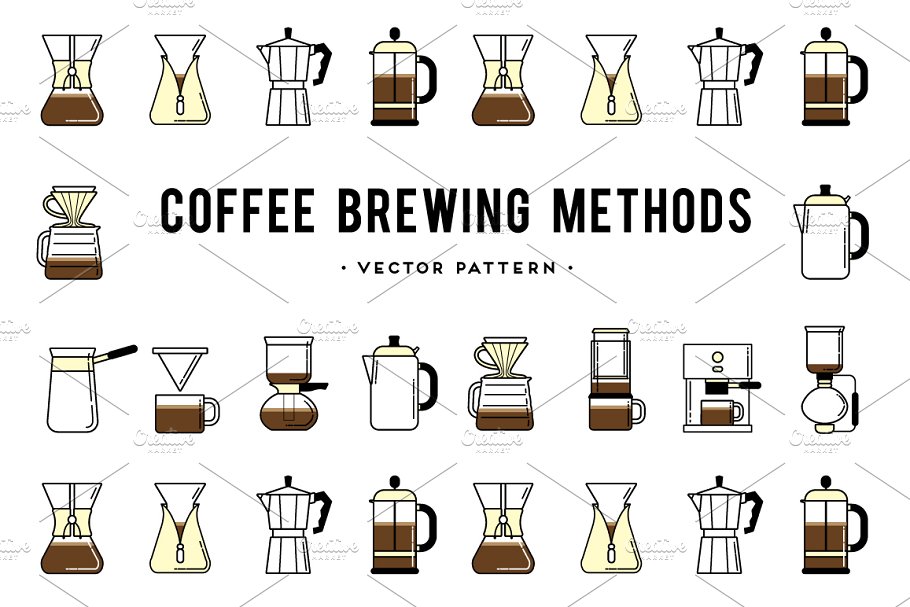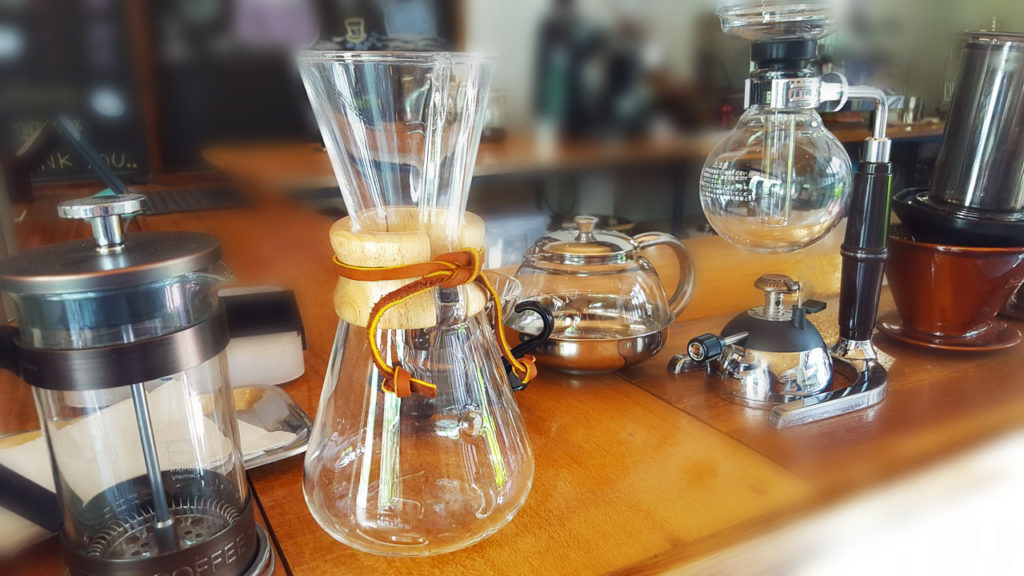Checking Out the Best Coffee Brewing Methods for Perfect Taste Every Single Time
Checking Out the Best Coffee Brewing Methods for Perfect Taste Every Single Time
Blog Article
The Science Behind Coffee Developing: How Temperature Level and Time Affect Your Drink
Comprehending the science behind coffee developing exposes that temperature and time are not plain variables but pivotal elements that dictate the drink's flavor profile and total quality. The optimal brewing temperature level normally drops in between 195 ° F and 205 ° F, while the period of extraction varies considerably throughout various approaches. This interaction of aspects can lead to a cup that is either fascinating or unsatisfactory. As we explore the subtleties of these aspects, the question emerges: how can one effectively balance temperature level and time to attain that ideal mixture?
The Chemistry of Coffee Extraction
The chemistry of coffee extraction explores the elaborate procedures that transform raw coffee beans into the aromatic beverage enjoyed worldwide. This makeover mostly includes the solubility of various substances existing in the beans, which are affected by aspects such as grind size, water quality, and the developing technique used.
Throughout the developing procedure, warm water works as a solvent, removing soluble substances, including caffeine, lipids, sugars, and acids, from the coffee grounds. Each substance contributes to the flavor account, scent, and body of the final drink. For example, acids are in charge of appetizing and bright notes, while oils add to an abundant mouthfeel.
The removal process is not uniform; various compounds dissolve at various prices. The initial phases of developing essence acids and sugars, leading to a positive acidity, while long term removal can cause resentment because of over-extraction of unfavorable substances. Comprehending these chemical interactions is crucial for enhancing developing methods, as the equilibrium in between removal time and water temperature level can dramatically affect the general quality of the coffee. Eventually, grasping the chemistry of coffee extraction is vital to attaining a well-rounded and tasty mug.
Ideal Brewing Temperatures
Discovering the appropriate developing temperature level is crucial for opening the full possibility of coffee tastes and scents - coffee brewing methods. Research shows that the optimum range for brewing coffee exists in between 195 ° F to 205 ° F(90 ° C to 96 ° C) Within this array, the extraction process efficiently liquifies the preferable soluble compounds in coffee beans, leading to a delicious and balanced cup
Developing at reduced temperature levels, such as below 195 ° F(90 ° C ), may result in under-extraction, yielding an acidic and weak mixture with soft flavors. Alternatively, brewing at temperature levels going beyond 205 ° F(96 ° C) can result in over-extraction, producing a bitter and harsh taste as a result of the excessive dissolution of unfavorable substances, such as tannins.
In addition, the optimal brewing temperature level can vary relying on the coffee bean type and roast degree. Lighter roasts usually profit from a little greater temperature levels to boost their complicated taste accounts, while darker roasts might be much better suited to reduced temperatures to reduce resentment.
Eventually, maintaining accuracy in brewing temperatures is vital for attaining an unified equilibrium of flavors, guaranteeing that every mug of coffee delivers an enjoyable sensory experience.
Effect of Brewing Time
Brewing time plays a crucial role in identifying the taste profile and overall quality of coffee. Shorter brewing times can result in under-extraction, leading to a sour or weak taste, as not sufficient soluble compounds are dissolved.
Ideal developing time varies depending on the technique used and the work dimension of the coffee. As an example, a French press commonly needs regarding four mins, while coffee removal is normally finished within 25 to 30 secs. It is vital to calibrate developing time in combination with other variables, such as water temperature and coffee-to-water proportion, to achieve the preferred taste account.
Recognizing the influence of developing time allows coffee fanatics to fine-tune their brewing methods, ultimately enhancing the sensory experience of their cup (coffee brewing methods). With cautious interest to this variable, one can open the full possibility of the coffee, disclosing its unique features and nuances
Brewing Approaches and Their Effects

As an example, techniques like French press and cool brew enable a much longer steeping time, causing a fuller body and durable flavor because of raised extraction of oils and soluble solids. Conversely, coffee developing utilizes high pressure and a much shorter removal time, producing a concentrated shot that highlights extreme flavors and a rich crema.
Pour-over strategies, such as Chemex or V60, provide a more regulated extraction process, enabling the maker to manipulate flow price and water circulation, which can boost illumination and clearness. Meanwhile, percolation approaches cycle water through the coffee grounds several times, causing a stronger, often bitter taste.
Finally, making use of paper filters versus metal filters can additionally affect the final preference; paper Clicking Here filters usually produce a cleaner cup by trapping oils and great fragments, while steel filters allow even more oils to go through, adding to a fuller mouthfeel - coffee brewing methods. Comprehending these subtleties can boost the coffee experience considerably
Tips for Perfecting Your Mixture
A well-executed mixture can change even the most basic coffee into an impressive experience. To accomplish this, focus to detail is important. Beginning with premium, freshly baked beans, as their flavor profile diminishes gradually. Grind the beans prior to making to take full advantage of quality, ensuring the grind size matches your developing approach-- coarser for French press and finer for espresso.
Water top quality plays a critical duty; use filtered water devoid of pollutants. The ideal brewing temperature level ranges between 195 ° F and 205 ° F(90 ° C to 96 ° C ) As well warm can scorch the coffee, while also awesome may under-extract tastes.
Timing is similarly crucial. For immersion techniques, steeping for 3 to five mins is optimal, whereas drip methods commonly take around five minutes. Try out mixture times to locate your favored strength.

Conclusion
In summary, the complex relationship between temperature level and time is extremely important in more helpful hints the coffee brewing process. Following optimum developing temperatures between 195 ° F and 205 ° F, along with precise timing customized to every approach, makes certain the wanted taste account is achieved. Understanding these scientific principles equips individuals to refine their brewing strategies, inevitably causing a much more pleasurable and balanced coffee experience. Proficiency of these aspects is vital for any kind of coffee lover seeking excellence in their drink.
Understanding the science behind coffee brewing exposes that temperature level and time are not plain variables but pivotal components that dictate the drink's taste profile and overall top quality. Comprehending these chemical communications is vital for optimizing brewing methods, as the balance between extraction time and water temperature level can considerably influence the overall top quality of the coffee.Developing time plays a critical role in identifying the flavor account and total top quality of coffee. By concentrating on these components-- bean quality, grind dimension, water temperature, soaking time, and ratio-- you can raise your coffee developing process, resulting in a continually remarkable cup.
In recap, the elaborate relationship in between temperature and time is critical in the coffee brewing procedure.
Report this page